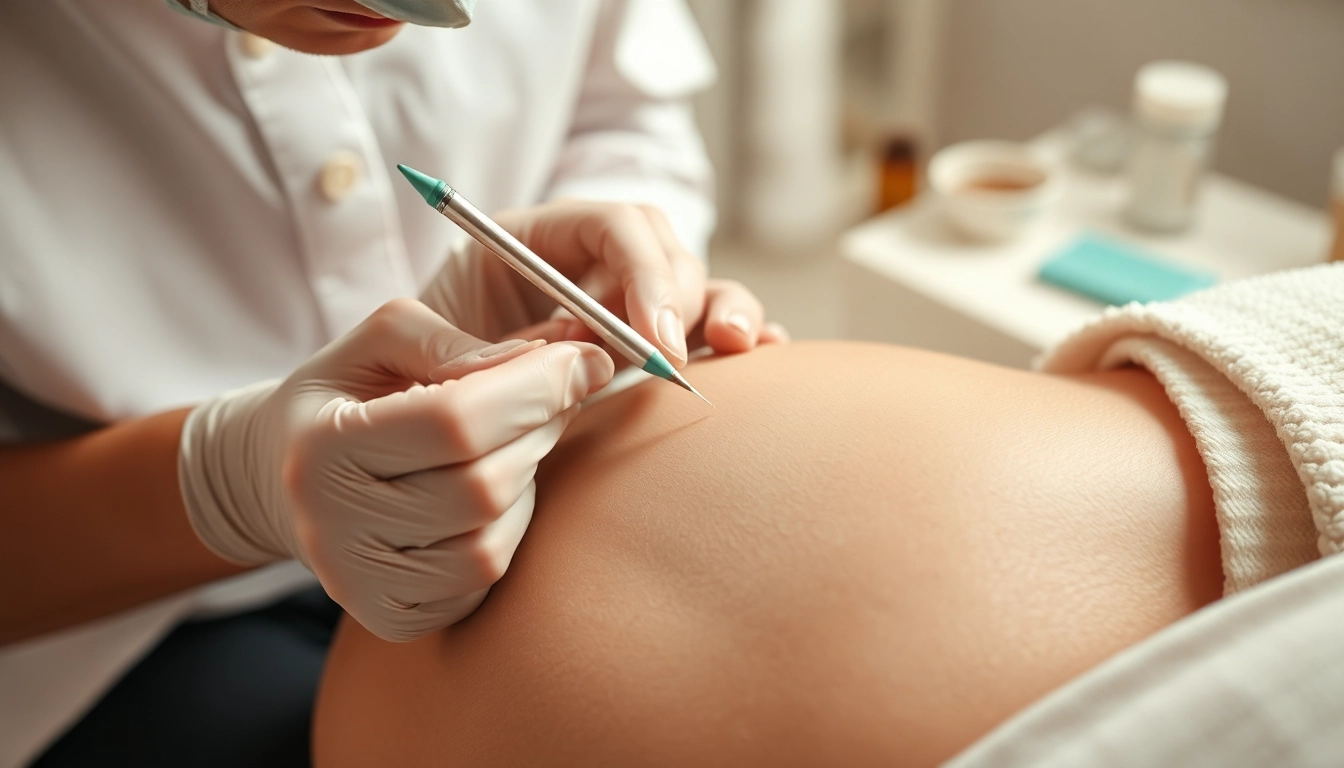
Understanding Testosterone Replacement Therapy
What is Testosterone Replacement Therapy?
Testosterone Replacement Therapy (TRT) is a medical treatment designed to alleviate symptoms associated with low testosterone levels in men. Testosterone, an essential hormone produced primarily in the testicles, plays a vital role in several bodily functions, including sexual health, muscle mass, bone density, and fat distribution. When testosterone levels drop due to aging, medical conditions, or other factors, it can lead to a range of symptoms such as fatigue, depression, and decreased libido.
TRT can help restore hormone levels through various forms of administration, including injections, patches, gels, and pellets. Each method has its unique benefits and considerations, and the choice largely depends on the patient’s preference and healthcare provider’s recommendations. For more in-depth information on Testosterone Replacement Therapy, it’s essential to consult healthcare professionals who can guide the treatment effectively.
Indications for Testosterone Replacement Therapy
Indications for initiating TRT typically include a confirmed diagnosis of male hypogonadism, characterized by consistently low testosterone levels accompanied by clinical symptoms. Clinical symptoms may manifest in numerous ways, such as:
- Reduced libido or sexual dysfunction
- Decreased muscle mass and strength
- Increased body fat
- Fatigue and decreased energy levels
- Depression or mood changes
- Reduced bone density or increased risk of fractures
Before starting TRT, a comprehensive evaluation by a healthcare provider is crucial. This evaluation often includes blood tests to measure testosterone levels, along with assessments of overall health and personal health history.
How Testosterone Replacement Therapy Works
The way TRT works is relatively straightforward: it compensates for the body’s diminished testosterone production. Depending on the method of administration, testosterone is introduced into the body, where it enters the bloodstream and begins to take effect. For example:
- Injections: Typically administered bi-weekly or monthly, testosterone injections restore hormone levels quickly and can be more effective for some patients.
- Patches: Applied daily to the skin, patches deliver a steady dose of testosterone throughout the day.
- Gels: After applying to the skin, gels allow testosterone to be absorbed into the bloodstream, offering a convenient option.
- Pellets: Implanted under the skin, pellets release testosterone over several months, providing long-term treatment without the need for frequent dosing.
The choice of therapy depends on individual preferences, response to treatment, and clinical recommendations from healthcare providers.
Benefits of Testosterone Replacement Therapy
Physical Health Improvements
One of the key benefits of TRT is the profound impact it can have on a man’s physical health. By restoring testosterone levels, patients often experience improvements such as:
- Enhanced Muscle Mass: Testosterone plays a significant role in muscle protein synthesis, and many men notice an increase in strength and muscle mass after starting therapy.
- Increased Bone Density: Low testosterone can lead to decreased bone density, increasing fracture risk. TRT has been associated with improvements in bone density, reducing this risk.
- Improved Fat Distribution: Many men report a decrease in body fat, particularly visceral fat, after undergoing TRT.
Emotional and Psychological Benefits
In addition to the physical benefits, TRT can significantly impact mental health. Men undergoing treatment often experience:
- Increased Energy Levels: Many report noticeable boosts in energy and vitality, alleviating feelings of fatigue.
- Improved Mood: Enhanced testosterone levels can lead to improved mood and reduced symptoms of depression or anxiety.
- Enhanced Cognitive Function: Some studies suggest that testosterone might contribute to better memory and cognitive abilities.
Enhancing Quality of Life through Testosterone Replacement Therapy
Overall, the potential benefits of TRT culminate in a markedly improved quality of life. Men who successfully undergo therapy often enjoy:
- Improved Relationships: Increased libido and sexual function can enhance intimate relationships.
- Greater Engagement in Physical Activities: Higher energy levels and improved physical conditioning often lead to increased participation in hobbies and social activities.
- Increased Overall Satisfaction: Men frequently report an overall improvement in life satisfaction and emotional well-being.
Risks and Side Effects of Testosterone Replacement Therapy
Common Side Effects
While many men experience significant benefits from TRT, it is important to acknowledge the potential risks and side effects. Common side effects include:
- Acne and Skin Reactions: Users of testosterone gels or patches may experience skin irritation or acne.
- Fluid Retention: Some men might notice swelling in the ankles or feet.
- Increased Red Blood Cell Count: TRT can elevate hematocrit levels, leading to a potential risk of clotting disorders.
Long-Term Health Considerations
Beyond immediate side effects, there are long-term considerations that must be evaluated. Possible risks include:
- Prostate Health: There is ongoing debate about the link between TRT and prostate cancer. While existing studies show no direct causation, men with a history of prostate issues should be cautious.
- Sleep Apnea: Men undergoing TRT may experience aggravated sleep apnea, emphasizing the need for sleep assessments prior to treatment.
- Cardiovascular Concerns: Some studies have suggested a potential link between TRT and cardiovascular risks. While the evidence is mixed, this aspect requires careful monitoring.
Evaluating Risks versus Benefits
Ultimately, the decision to start TRT should be made on a case-by-case basis, weighing the benefits against the potential risks. Healthcare professionals can assist in determining whether the benefits outweigh the risks for individuals, especially in the context of personal health history and lifestyle factors.
Evaluating Candidates for Testosterone Replacement Therapy
Who Should Consider Testosterone Replacement Therapy?
TRT may be appropriate for men experiencing the symptoms of andropause or low testosterone, particularly if blood tests confirm low serum testosterone levels. Candidates should ideally present with:
- Symptoms of hypogonadism
- Low testosterone levels on multiple blood tests
- Absence of contraindicating conditions, such as untreated sleep apnea, severe urinary symptoms, or a history of prostate cancer.
Pre-Treatment Assessments
Before starting TRT, thorough pre-treatment assessments are vital. These may include:
- Comprehensive Blood Tests: To establish baseline testosterone levels and assess overall health.
- Prostate-Specific Antigen (PSA) Testing: To evaluate prostate health.
- Assessment of Sleep Apnea Risk: As sleep disorders can impact the success of TRT.
Discussing Expectations with Healthcare Providers
Engaging in an open dialogue with healthcare providers is crucial. Discussions should encompass:
- Realistic expectations regarding the potential benefits of TRT and the timescale for seeing results.
- A thorough understanding of potential side effects and complications.
- The importance of regular monitoring and follow-up appointments to evaluate ongoing efficacy and health impacts.
Navigating the Testosterone Replacement Therapy Journey
Finding Qualified Providers
Identifying a skilled healthcare provider experienced in TRT is foundational to success. Here are steps to consider:
- Seek referrals from trusted sources, including primary care physicians or specialists in endocrinology or urology.
- Ensure potential providers have substantial experience and communicate openly about TRT practices.
- Look for providers that prioritize patient education and offer ongoing support throughout the treatment journey.
Creating a Personalized Treatment Plan
Each individual’s treatment plan must be tailored to their unique needs. Personalization may include:
- Selection of the most effective method of testosterone delivery.
- Setting a dosage schedule that aligns with the patient’s lifestyle.
- Incorporating lifestyle recommendations, including diet and exercise, to enhance treatment effects.
Monitoring and Adjusting Testosterone Replacement Therapy
Successful management of TRT is not a one-time event but an ongoing process that requires:
- Regular follow-up appointments to monitor testosterone levels and assess side effects. Initial follow-ups are often suggested at 3-6 month intervals.
- Routine blood tests to ensure that hormone levels remain within the targeted range and to monitor for any adverse effects.
- Open communication about any changes in symptoms or side effects that could indicate a need for dosage adjustments.





